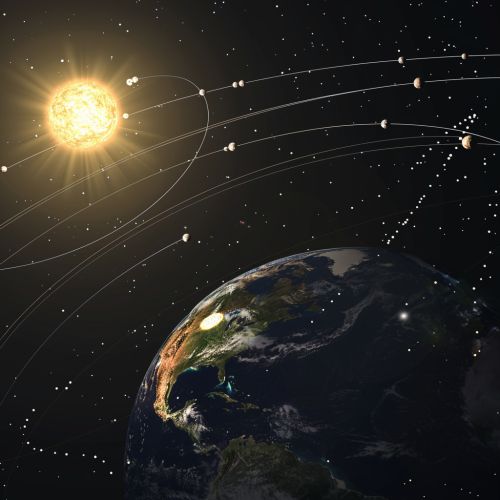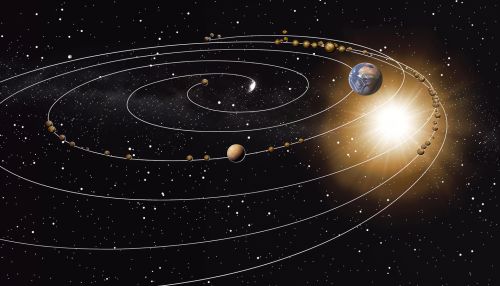Milankovitch Theory
Introduction
The Milankovitch Theory is a scientific explanation that describes the long-term climatic changes on Earth due to the planet's movements in relation to the Sun. Named after the Serbian geophysicist and astronomer Milutin Milankovitch, who formulated it in the early 20th century, the theory is based on the premise that variations in the Earth's orbit and axial tilt cause changes in the distribution of solar radiation reaching the Earth, leading to periods of climatic warming and cooling, known as glacial and interglacial periods.


Orbital Variations
According to Milankovitch, there are three fundamental types of variations in Earth's orbit, each with a different timescale. These are known as eccentricity, axial tilt (or obliquity), and precession.
Eccentricity
Eccentricity refers to the shape of the Earth's orbit around the Sun. Over a period of about 100,000 years, the Earth's orbit changes from nearly circular (low eccentricity) to slightly elliptical (high eccentricity) and back again. When the orbit is highly elliptical, the Earth's distance from the Sun changes more significantly over the course of a year, leading to greater seasonal contrast in one hemisphere.
Axial Tilt
Axial tilt, or obliquity, is the angle between the Earth's rotational axis and its orbital plane. This angle varies between 22.1 and 24.5 degrees over a cycle of approximately 41,000 years. Greater tilt means more severe seasons—warmer summers and colder winters—while less tilt means milder seasons.
Precession
Precession is the wobble of the Earth's axis, similar to the motion of a spinning top. Over a cycle of about 26,000 years, the direction of the tilt changes. This affects the timing of the seasons and the intensity of solar radiation reaching different parts of the Earth at different times of the year.
Climatic Impact
The Milankovitch Theory proposes that these orbital variations cause changes in the Earth's climate over tens of thousands of years. When certain phases of these cycles align, they can either amplify or reduce the amount of solar radiation reaching the Earth, leading to periods of global warming or cooling.
Glacial and Interglacial Periods
The most significant climatic changes associated with the Milankovitch cycles are the glacial and interglacial periods that have occurred over the past few million years. During a glacial period, cooler temperatures lead to an expansion of ice sheets and glaciers. In contrast, during an interglacial period, warmer temperatures lead to the melting of ice, causing sea levels to rise.
Ice Age Cycles
The Milankovitch Theory is often used to explain the timing of the ice age cycles over the past few million years. According to the theory, periods of high eccentricity, high axial tilt, and certain phases of precession align to decrease solar radiation in the northern hemisphere, leading to the onset of an ice age. Conversely, when these factors align in the opposite way, an ice age ends.
Criticisms and Limitations
While the Milankovitch Theory has been instrumental in our understanding of long-term climate change, it is not without its criticisms and limitations. Some scientists argue that the theory cannot explain all observed climate changes and that other factors, such as greenhouse gas concentrations and volcanic activity, also play a significant role. Moreover, the theory relies on precise calculations of Earth's past orbital variations, which are difficult to confirm with absolute certainty.
Conclusion
Despite these challenges, the Milankovitch Theory remains a cornerstone of paleoclimatology, providing a framework for understanding the natural rhythms of Earth's climate. By studying these cycles, scientists can gain insights into past climate changes and make predictions about future ones, helping us prepare for the impacts of climate change.
